Meet the competitors.
In this corner, meet Mr. Teddy Bear. He's a blond, green-eyed carpenter bee, Xylocopa varipuncta, a native, and one of three species of carpenter bees commonly found from northern to southern California to western New Mexico.
In the other corner, meet Mr. Bodyslam. He's a European wool carder bee, Anthidium manicatum, a native of Europe. His "immigrant ancestor" was first detected in the United States (New York) in 1963, and the species spread west. The carder bee (so named because the female "cards" fuzz from plants for her nest) was first recorded in California (Sunnyvale) in 2007.
The competitors meet on foxglove, Digitalis purpurea, which yields dramatic pink-purple fingerlike flowers (and medicine for heart patients).
Mr. Teddy Bear is famished. He's doing what entomologists call "nectar robbing." He's drilling a hole in the corolla and drinking nectar, bypassing the usual plant-pollinator relationship. He's grabbing the reward and "cheating" by entering the flower from the outside, avoiding contact with the anthers.
Mr. Bodyslam is territorial. He's patrolling the foxglove patch--HIS foxglove patch--trying to save the nectar for his own species so he can mate with them. When he sees intruders, he targets them.
So here's Mr. Teddy Bear, drilling and sipping, sipping and drilling. Life is good.
"Hey, get away from my flowers and nobody gets hurt! They're mine!"
"Hey, I'm bigger than you. Get lost."
And the battle begins.
The winner, in this corner, Mr. Teddy Bear. He successfully avoided contact by crawling between the flowers (where Mr. Bodyslam couldn't reach him) and then sneaking to the corolla.
But once--just once--contact erupted. Ouch!
Attached Images:
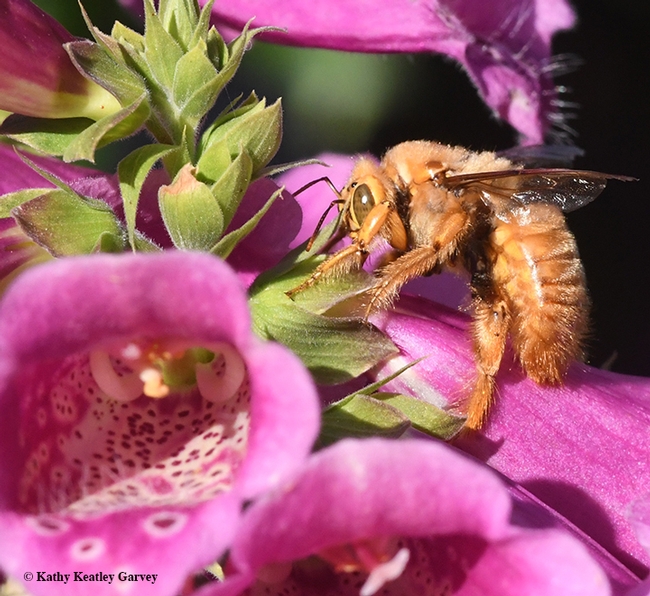
Meet Mr. Teddy Bear, a green-eyed blond trying to nourish himself on foxglove nectar. (Photo by Kathy Keatley Garvey)
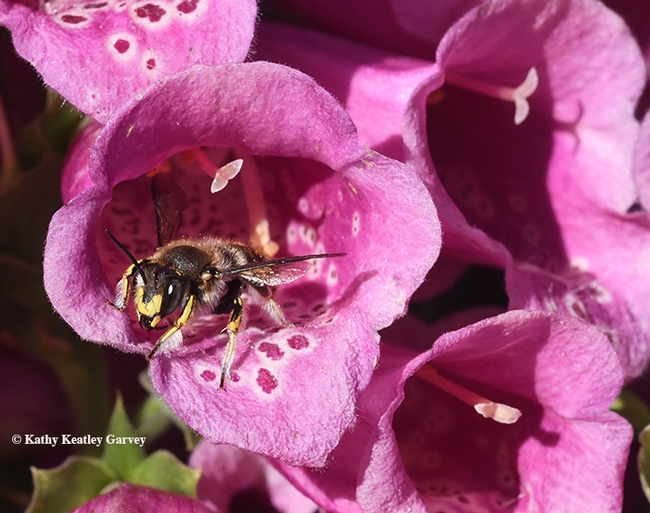
Meet Mr. Bodyslam, a very territorial European wool carder bee. He patrols the foxgloves. (Photo by Kathy Keatley Garvey)
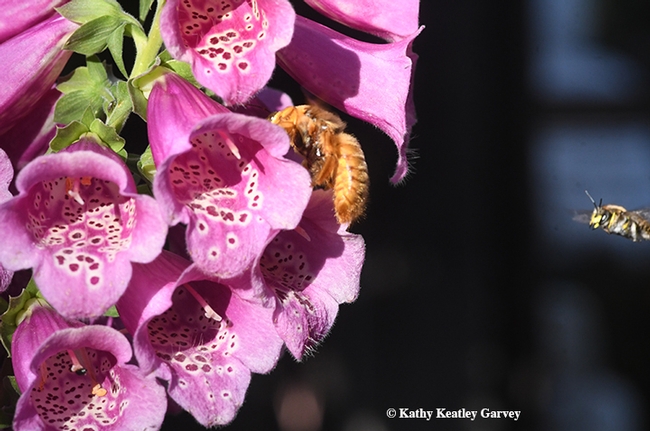
Mr. Bodyslam targets the unsuspecting Mr. Teddy Bear. "Hey, get away from my flowers and nobody gets hurt." (Photo by Kathy Keatley Garvey)
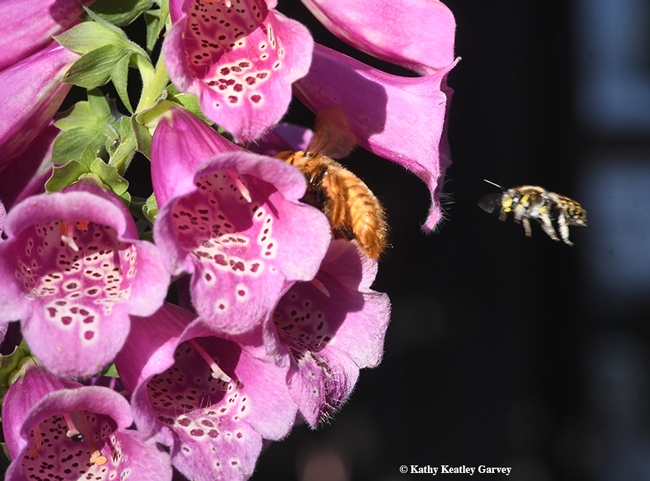
Mr. Bodyslam is moving so fast, he's a blur. (Photo by Kathy Keatley Garvey)
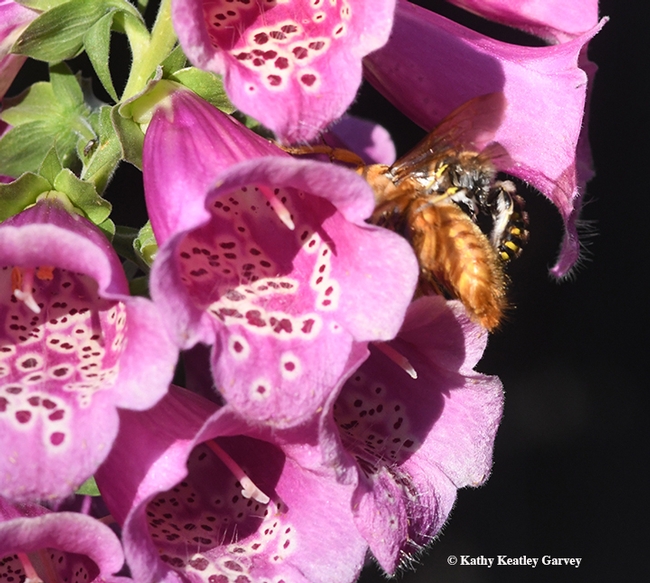
And the battle begins! Mr. Bodyslam attacks Mr. Teddy Bear. "Hey, can't a fellow get a bite to eat in peace?" (Photo by Kathy Keatley Garvey)
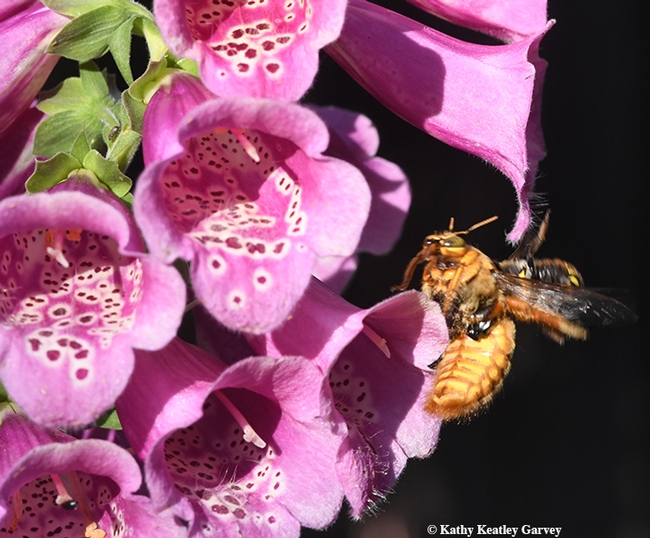
Gotcha! The attack turns vicious. Mr. Bodyslam slams into Mr. Teddy Bear, a blow that prompted Mr. Teddy Bear to depart (only to return). (Photo by Kathy Keatley Garvey)